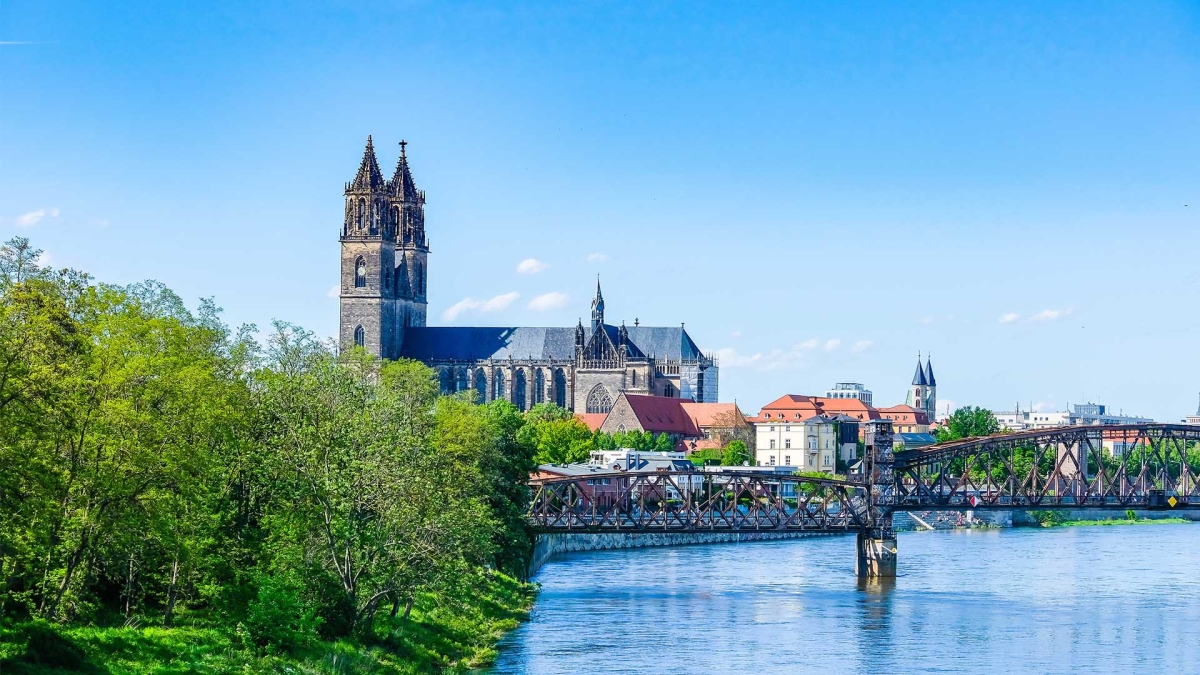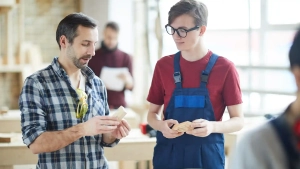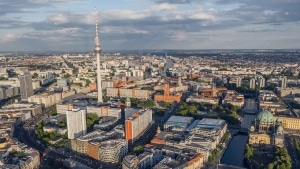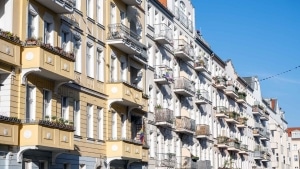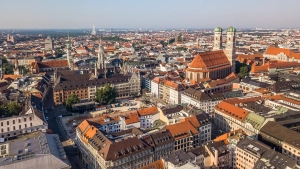Things to Do in Magdeburg: Magdeburg, the capital city of Saxony-Anhalt in Germany, unfolds as a vibrant tapestry of history, culture, and natural beauty. Nestled on the banks of the Elbe River, this university town is a haven for new residents and visitors alike, offering a plethora of things to do in Magdeburg. From exploring the awe-inspiring Magdeburg Cathedral to wandering through the lush green spaces, the city combines modern living with rich historical roots in a bike-friendly and convenient public transport environment. Whether you’re drawn to its picturesque views or the moderate climate with distinct seasons, Magdeburg welcomes you with open arms and endless possibilities.
As you embark on this journey through Magdeburg, your adventure is set against a backdrop of iconic landmarks and hidden gems. This article will guide you through Magdeburg attractions such as the Green Citadel of Magdeburg, reminding you why this city is a treasure trove of experiences waiting to be discovered. From cultural venues that speak volumes of its past to the bustling scenes of festivals and markets, every corner of Magdeburg tells a story. With this fresh perspective for new residents, prepare to immerse yourself in the best of what Magdeburg has to offer, making every moment an adventure to remember.
Things to Do in Magdeburg: Cathedral of Magdeburg
- Things to Do in Magdeburg: Cathedral of Magdeburg
- Things to Do in Magdeburg: Grüne Zitadelle (Green Citadel)
- Discover the Architectural Wonder: Grüne Zitadelle
- Multifunctional Space for Everyone
- Accessibility and Visitor Information
- Engage with Innovative Design
- Things to Do in Magdeburg: Alter Markt and Magdeburger Reiter
- The Iconic Magdeburger Reiter
- Historical Insights and Restoration
- Current Exhibition
- Symbolism and Architectural Influence
- Things to Do in Magdeburg: Kulturhistorisches Museum
- Exploring the Kulturhistorisches Museum Magdeburg
- Permanent Exhibitions to Enrich Your Knowledge
- Temporary Exhibitions Adding Fresh Perspectives
- A Rich Collection Awaiting Discovery
- Visitor Information for a Seamless Experience
- Things to Do in Magdeburg: Magdeburg Water Bridge
- Unveiling the Magdeburg Water Bridge: A Marvel of Engineering
- Key Features and Structural Details
- Historical Context and Impact
- Engaging with the Structure
- Things to Do in Magdeburg: Green Spaces and Leisure Activity Spots
- Explore Elbauenpark
- Stadtpark Rotehorn
- Herrenkrug Park
- Klosterberggarten and Elbuferpromenade
- Glacis Park and Nordpark
- Art and Culture Venues
- Shopping and Culinary Experiences
- Festivals and Events
- Elbauenpark and the Millennium Tower
- Cultural and Shopping Spots
- Historic Landmarks and Museums
- Technikmuseum Magdeburg
- FAQs
- What is the claim to fame for Magdeburg?
- How safe is Magdeburg during nighttime?
- Does Magdeburg offer an affordable cost of living?
- What is the quality of life like in Magdeburg?
- Is Magdeburg worth seeing?
- What is Magdeburg best known for?
- In which state is Magdeburg?
- Is Magdeburg a part of Berlin?
- Is Magdeburg a cheap city?
- Is Magdeburg a safe city?
- What does Magdeburg mean in German?
- Why was Magdeburg bombed?
- Was Magdeburg Germany in WWII?
- Is Magdeburg close to Berlin?
- How old is Magdeburg?
- Which city is close to Magdeburg?
- Why is the Magdeburg water bridge famous?
Stepping into the Cathedral of Magdeburg, you enter a realm where history and architecture converge magnificently. Known officially as Magdeburg Cathedral and dedicated to Saints Catherine and Maurice, this landmark is not just the oldest Gothic cathedral in Germany but also a pivotal historical site. Constructed in the 13th century, it stands as the first Gothic cathedral in the country and marks the burial site of Emperor Otto I, the first Holy Roman Emperor.
Architectural Grandeur and Historical Significance
The imposing towers of the cathedral, visible from miles around, underscore its architectural grandeur. At 99.25 meters tall, it dwarfs many other historical structures, including Calcutta’s Gothic Cathedral. Inside, the cathedral houses the stone sarcophagus of Emperor Otto I, adding a monumental touch to its already rich historical tapestry. The walls are adorned with sculptures that depict various stories from the Bible, offering a visual feast that complements the spiritual serenity of the space.
Visiting the Cathedral
The cathedral welcomes visitors daily from 10:00 AM to 6:00 PM, with guided tours available to enrich your experience. These tours delve into the cathedral’s extensive history, its architectural nuances, and the art it houses. For a nominal fee of 6 EUR for adults and 4 EUR for students and children aged 6-17, you can partake in these tours; children under 6 enjoy free admission. Note that while photography is permitted, the use of flash is prohibited to preserve the integrity of the art and architecture.
Guided Tours and Accessibility
For those requiring more specific language needs, tours are generally offered in German, but arrangements for English tours can be made with advance notice. This ensures that all visitors, regardless of their linguistic background, can fully appreciate the rich history and architectural beauty of the cathedral. The last guided tour begins at 5:00 PM, allowing you ample time to explore and absorb the majestic atmosphere of this historic site.
The Cathedral of Magdeburg stands as a testament to the city’s illustrious past and its ongoing reverence for culture and history. Whether you are a history buff, an architecture enthusiast, or simply someone in search of a peaceful retreat within the city, the cathedral offers a profound glimpse into the historical soul of Magdeburg.
Things to Do in Magdeburg: Grüne Zitadelle (Green Citadel)
Discover the Architectural Wonder: Grüne Zitadelle
Designed by the renowned artist Friedensreich Hundertwasser, the Grüne Zitadelle of Magdeburg stands as a beacon of unique architectural design and ecological sustainability. This vibrant and colorful building, with its no straight lines philosophy, offers a visual feast that contrasts sharply with conventional urban landscapes. As you explore, you’ll notice the undulating floors and the lush green roof, each element a testament to Hundertwasser’s vision of harmonious living with nature.
Multifunctional Space for Everyone
The Grüne Zitadelle is not just an architectural marvel; it’s a lively community hub. Here’s what you can find inside this extraordinary building:
- Accommodations and Living Spaces: It houses comfortable hotel rooms and private apartments, each uniquely designed to ensure that no two spaces are alike.
- Commercial and Leisure Spots: From quaint shops to delightful restaurants and cafes, the citadel offers numerous spots for leisure and shopping.
- Cultural Venues: Engage with the local culture through events and exhibitions regularly held here, providing enriching experiences for all ages.
- Childcare Facilities: A kindergarten within the building makes it a convenient choice for families residing or visiting here.
Accessibility and Visitor Information
The Grüne Zitadelle is committed to inclusivity, ensuring accessibility for visitors with disabilities through well-equipped facilities including elevators and special restrooms. Open daily, the citadel welcomes everyone, whether you’re an individual visitor, part of a school group, or exploring with family. Here’s how you can make the most of your visit:
- Guided Tours: Available throughout the day, these tours offer an in-depth look at the unique architectural and ecological features of the building.
- Relaxation and Green Spaces: Adjacent to the building, Hundertwasser Park provides a serene environment where you can unwind amidst nature.
Engage with Innovative Design
Every corner of the Grüne Zitadelle invites you to interact with innovative design concepts. From the 900 different window designs to the rights of tenants to personalize their living spaces, the building exemplifies a personalized approach to urban living. This design philosophy extends to the ecological aspects, with features like rainwater harvesting and solar panels emphasizing sustainable living practices.
Whether you are seeking an artistic inspiration, a peaceful retreat, or a lively community space, the Grüne Zitadelle of Magdeburg offers a unique blend of all. Its doors are open to explore and experience the harmony between human creativity and environmental consciousness, right in the heart of Magdeburg.
Things to Do in Magdeburg: Alter Markt and Magdeburger Reiter
As you stroll through the heart of Magdeburg, you’ll inevitably find yourself in the historical square known as Alter Markt. This square is not just a scenic spot but a narrative hub that has witnessed numerous pivotal events in Magdeburg’s history. Today, it stands renovated, bustling with tourists and locals alike, drawn by its charm and historical significance.
The Iconic Magdeburger Reiter
Central to the Alter Markt is the Magdeburger Reiter, an equestrian statue that is a profound symbol of Magdeburg. Depicting Emperor Otto I, this statue, created in the 13th century, is not only one of the city’s most significant landmarks but also the first free-standing equestrian statue north of the Alps. The Magdeburger Reiter has been a witness to history, having been damaged and meticulously restored several times, the latest being in 2018.
Historical Insights and Restoration
The original colors of the statue, a vibrant mix of azurite blue, green, red, and white, were rediscovered during its recent restoration, bringing to life the artistic nuances of the medieval period. This restoration not only revitalized its appearance but also reinforced its status as a symbol of Magdeburg’s independence and rich cultural heritage.
Current Exhibition
While the original Magdeburger Reiter is carefully preserved in the Kaiser-Otto-Saal of the Kulturhistorisches Museum Magdeburg, a bronze replica graces the Alter Markt. This placement near the Magdeburg Cathedral, once a significant imperial palace during Otto I’s reign, underscores its historical and imperial significance.
Symbolism and Architectural Influence
The design of the Magdeburger Reiter, showing a ruler on horseback, traces its roots back to the Roman period and was popularized by Karl the Great. This style not only highlights the imperial power and jurisdiction of Otto I but also reflects the city’s enduring spirit of autonomy and freedom.
Alter Markt and the Magdeburger Reiter together offer a unique glimpse into the historical and cultural fabric of Magdeburg. As you explore these sites, you engage directly with the city’s past, its architectural evolution, and its storied independence, making your visit to Magdeburg truly memorable.
Things to Do in Magdeburg: Kulturhistorisches Museum
Exploring the Kulturhistorisches Museum Magdeburg
Nestled within the historic confines of the Kloster Unser Lieben Frauen, the Kulturhistorisches Museum Magdeburg is not just a repository of art and history but a vibrant cultural hub. Established in 1906 originally as the Kaiser-Friedrich Museum, it has evolved to showcase an extensive array of exhibitions that capture the essence of Magdeburg’s rich heritage.
Permanent Exhibitions to Enrich Your Knowledge
The museum’s permanent exhibitions are a testament to the city’s layered history. Here’s what you can explore:
- Magdeburg – the History of the City: Dive into the depths of local history from its earliest days to the present.
- Kunstverführung (Art Seduction): A display of captivating art pieces that tell stories beyond words.
- Der Magdeburger Reiter: Discover the intricacies behind the famous 13th-century equestrian statue.
- Dauerausstellung Schulgeschichte (Permanent School History Exhibition): A look back at the educational heritage of Magdeburg.
- Barockkrippe (Baroque Crib): Explore this unique piece, highlighting the artistic style of the Baroque period.
Temporary Exhibitions Adding Fresh Perspectives
The museum also hosts a variety of temporary exhibitions, such as “Sonderausstellung: Alwines Puppen” which offers visitors a glimpse into unique historical narratives and artistic expressions. These exhibitions change regularly, providing fresh content and perspectives for both new and returning visitors.
A Rich Collection Awaiting Discovery
With over 600,000 objects, the museum’s collection is vast and varied, encompassing:
- Archaeology and medieval artifacts
- City history and cultural evolution
- Coins, medals, and militaria
- Furniture, paintings, and graphic arts
- Textiles, arts, and crafts
- An extensive library for research and reference
Visitor Information for a Seamless Experience
The museum is open from Tuesday to Sunday, with operational hours from 10 am to 5 pm on weekdays and extended hours till 6 pm on weekends. The entrance fee is reasonably priced at €8 for adults, ensuring accessibility for all. It’s important to note that the museum shares its premises with the Museum of Natural History, allowing for a diverse experience under one roof.
By visiting the Kulturhistorisches Museum Magdeburg, you engage with the city’s past and present, enriching your understanding of this historic city through art, culture, and education. Whether you are a history enthusiast or an art lover, the museum offers a profound insight into the collective memory and artistic achievements of Magdeburg.
Things to Do in Magdeburg: Magdeburg Water Bridge
Unveiling the Magdeburg Water Bridge: A Marvel of Engineering
The Magdeburg Water Bridge, known locally as Kanalbrücke Magdeburg, stands as a testament to innovative engineering and strategic planning. This beam bridge, which began construction in March 1998 and was completed on October 10, 2003, represents a significant feat in modern civil engineering. It spans a total of 918 meters, with 690 meters over land and 228 meters over water, making it the largest water bridge in Europe.
Key Features and Structural Details
Design and Construction
The bridge’s design and construction incorporate 24,000 tons of steel and 68,000 cubic meters of concrete, showcasing the massive scale of this project. The main span stretches over 106 meters, providing a clear passage below of 90.00 meters by 6.25 meters. This structure not only connects the Mittellandkanal with the Elbe-Havel Canal but also facilitates a seamless navigational route that bypasses the Elbe River, enhancing the connectivity between Berlin’s inland harbour network and the ports along the Rhine River.
Accessibility and Usage
Designed with accessibility in mind, the Magdeburg Water Bridge supports a wide range of users. It is traversable by boats, pedestrians, and cyclists, making it a versatile link within the region’s transportation network. The bridge’s width of 34 meters and a height of 6.25 meters accommodate substantial traffic, ensuring smooth transit for both commercial and leisure activities.
Historical Context and Impact
Development and Challenges
The planning for the Magdeburg Water Bridge dates back to the early 20th century, with initial construction of the Mittellandkanal starting in 1905. However, the onset of World War II halted progress in 1942. It was not until after German reunification that construction resumed in 1998, reflecting the country’s renewed commitment to infrastructural development.
Economic and Cultural Significance
The completion of the bridge in 2003, at a cost of approximately €501 million, marked a pivotal moment in enhancing the economic efficiency and cultural linkage within the region. By allowing large commercial ships to navigate between the Rhineland and Berlin without the detours through the Elbe, the bridge significantly cuts travel time and costs, bolstering trade and tourism.
Engaging with the Structure
While there is no admission fee to cross the Magdeburg Water Bridge, visitors can opt for guided tours that delve into the bridge’s architectural and functional nuances. Additionally, the Magdeburg Harbor nearby offers cruises and boat tours, providing a unique perspective of this engineering marvel from the water.
The Magdeburg Water Bridge is more than just a means of transportation; it is a symbol of connectivity and innovation. As you explore this remarkable structure, consider the blend of historical perseverance and modern engineering that brought it to life, and how it continues to shape the flow of commerce and culture in the region.
Things to Do in Magdeburg: Green Spaces and Leisure Activity Spots
Magdeburg offers an abundance of green spaces and parks, each providing a unique setting for relaxation and leisure activities. These areas are not only aesthetically pleasing but are also vital for your well-being, offering a tranquil escape from the urban environment.
Explore Elbauenpark
Elbauenpark, one of the largest inner-city parks in Germany, is a highlight for both residents and visitors. This expansive park, covering 100 hectares, was developed for the 25th Federal Garden Show in 1999 and continues to enchant with its diverse attractions:
- Millennium Tower: Standing as a beacon of science and technology, the tower is open from March to December, offering an educational journey through human invention and discovery.
- Theme Gardens and Play Areas: From the rose gardens to the bamboo grove and the water playground, the park is segmented into various thematic areas that cater to all ages.
- Leisure and Sports Facilities: Engage in activities like summer tobogganing, frisbee golf, or climbing at the dedicated sports area.
- Cultural Events: The lakeside stage and other venues within the park host concerts and performances, making it a cultural hub in the city.
Admission to the park is free, although some attractions like the Millennium Tower and Butterfly House have separate entrance fees. The park is easily accessible via tram lines 5 and 6, and bus number 51.
Stadtpark Rotehorn
Situated on an island in the Elbe River, Stadtpark Rotehorn offers a perfect setting for jogging, picnics, and leisurely walks. This park is renowned for its scenic lake and lush landscapes, providing a picturesque backdrop for relaxation. The park’s history is tied to local legends, adding a mystical element to your visits.
Herrenkrug Park
As Magdeburg’s oldest public park, Herrenkrug Park is a masterpiece of landscape design. Opened in 1829 and styled as an English landscape garden, it features:
- Diverse Flora: The park is home to a wide variety of tree species, meticulously arranged to create a serene environment.
- Recreational Paths: Ideal for jogging and walking, the paths invite you to explore the park’s extensive grounds.
- Statues and Monuments: Scattered throughout the park, these elements add historical depth and artistic charm.
Accessible by tram line 6, Herrenkrug Park is a testament to Magdeburg’s commitment to preserving natural beauty and historical integrity.
Klosterberggarten and Elbuferpromenade
Klosterberggarten, designed by the famous Peter Joseph Lenné in 1825, is a botanic garden that offers a peaceful retreat with its diverse plant life and exotic hothouses. Adjacent to this, the Elbuferpromenade provides a stunning setting for a stroll along the Elbe River, leading directly to the Klosterberggarten.
Glacis Park and Nordpark
- Glacis Park: Located near the Studienkolleg, this small park is an ideal spot for breaks or outdoor study sessions. It also hosts the Glacis Open Air festival, attracting international artists and musicians.
- Nordpark: Close to the University of Magdeburg, Nordpark is popular among students and features beautifully landscaped gardens and memorials.
Magdeburg’s dedication to cultivating extensive green spaces not only enhances the city’s aesthetic appeal but also promotes a healthy, balanced lifestyle for its residents. Whether you’re seeking a quiet place to unwind or an active space for recreation, Magdeburg’s parks and gardens offer something for everyone.
Art and Culture Venues
Magdeburg boasts a rich tapestry of art and culture venues that cater to a diverse range of interests, from historical art collections to contemporary performances. Whether you’re a lover of classical art, modern drama, or vibrant festivals, this city has something special for you.
Key Art Museums and Historical Sites
- Art Museum Kloster Unser Lieben Frauen: Located in a former monastery, this museum is a treasure trove of medieval and modern art. With a modest admission fee of approximately €7 for adults, it’s a must-visit for art enthusiasts.
- Magdeburg Art Museum (MMK): Situated in a historic grain storehouse, the MMK houses over 70,000 works spanning from the Middle Ages to contemporary times. Enjoy free admission on the first Monday of every month, with regular prices at €8 for adults and €4 for concessions.
Dynamic Performance Venues
- Magdeburg Theatre: This venue is the heart of Magdeburg’s performing arts scene, offering everything from opera to contemporary drama.
- Magdeburg Puppet Theatre: Known for its enchanting performances of fairytales and modern stories, this theatre is a hit among all ages.
- Zwickmühle Cabaret Theatre: Famous for its sharp political comedy, it’s a cultural gem within the German-speaking community.
Cultural Centers and Event Locations
- Festung Mark: A versatile cultural center hosting a range of events including exhibitions, concerts, and lectures.
- St John’s Church and Viehbörse: These venues are not just architectural beauties but also host a variety of concerts and conferences, blending historical ambiance with modern cultural life.
Unique Art Exhibitions and Community Spaces
- Galerie Süd: Features numerous contemporary art exhibitions annually, showcasing local talents in various mediums such as paintings, sculptures, and textiles.
- Kloster Unser Lieben Frauen: More than just a museum, this site serves as a cultural hub with its frequent concerts, exhibitions, and festivals.
Outdoor and Special Event Venues
- Elbauenpark: Known for hosting significant events and festivals, including performances at the Lake Stage—one of Germany’s most attractive venues for open-air events.
- Cathedral Square: The epicenter for the DomplatzOpenAir performances and the Emperor Otto Festival, offering a blend of majestic settings and cultural festivities.
Magdeburg’s art and culture venues are integral to its vibrant community, offering endless opportunities to engage with the city’s rich historical and contemporary offerings. Whether you’re exploring ancient art or enjoying a modern play, these venues provide a deep connection to the city’s artistic soul.
Shopping and Culinary Experiences
Magdeburg not only captivates with its historical and cultural offerings but also serves as a thriving hub for shopping and culinary delights. Whether you’re searching for the latest fashion trends or craving traditional German cuisine, the city’s diverse districts and vibrant marketplaces cater to every taste and preference.
Premier Shopping Destinations
City-Carree and Allee-Center
For those who enjoy a comprehensive shopping experience, City-Carree and Allee-Center are must-visit destinations. Located in the heart of Magdeburg, City-Carree boasts over 100 stores, including top fashion retailers and electronics stores, alongside a variety of restaurants. Similarly, Allee-Center offers an impressive selection of over 120 stores, easily accessible by public transportation, ensuring a convenient and enjoyable shopping spree.
Hasselbachplatz
If you prefer a more eclectic shopping experience, Hasselbachplatz is the place to be. This lively square is renowned for its mix of independent shops, quaint cafes, and restaurants. It’s the perfect spot to find unique gifts, souvenirs, and to experience the local flavor of Magdeburg.
Breiter Weg and Ernst-Reuter-Allee
Breiter Weg, a pedestrian zone in the city center, is lined with numerous shops, cafes, and restaurants, making it a vibrant place for a leisurely stroll and some retail therapy. Similarly, Ernst-Reuter-Allee offers a range of shopping options, from fashion retailers to home decor shops and supermarkets, catering to all your needs.
Culinary Delights
Traditional and Modern Eateries
Magdeburg’s culinary scene is as diverse as its shopping. “Zum Alten Brauhaus” offers a traditional German dining experience with local dishes and brews, while “Salier Speisesaal” in the historic Salier Hall serves regional and seasonal dishes that cater to the palate of modern gourmets.
Brewery and Craft Beer Experiences
For beer enthusiasts, “BrauManufaktur Magdeburg” provides an exceptional brewery experience, offering a variety of craft beers paired with classic German cuisine. Additionally, Brewckau craft beer brewery serves homemade beers and local snacks, perfect for a casual hangout.
International Cuisine
For those with a taste for international flavors, Leiterstraße presents a wide selection of restaurants offering Greek, Asian, Italian, and Czech specialties. This street is a culinary journey around the world, located right in Magdeburg.
Cozy Cafes
“Cafe Central,” known for its delightful cakes and pastries, is a popular spot among locals and visitors alike. It’s an ideal place for a relaxing break during your city exploration, where you can indulge in some of the best sweet treats Magdeburg has to offer.
Magdeburg’s shopping and culinary experiences are integral to its charm and appeal. As you explore these venues, you’ll find that each location not only offers goods and services but also a taste of the local culture and lifestyle, making your time in Magdeburg truly enriching.
Festivals and Events
Magdeburg comes alive with a vibrant array of festivals and events throughout the year, each offering unique experiences and a chance to immerse yourself in the local culture. Whether you’re interested in music, art, or traditional festivities, there’s something on the calendar just for you.
Highlighted Upcoming Festivals
Table: Upcoming Festivals and Events
|
Festival Name |
Date(s) |
Location |
Ticket Price (€) |
Organized by |
|---|---|---|---|---|
|
Couch Festival 2024 |
August 23, 2024 |
Querenhorst |
Starting from 20 |
– |
|
PIXEL&KEKSE |
September 26, 2024 |
Wernigerode |
Starting from 90 |
XYBERDYN Creative Agency |
|
Kriya Yoga Festival |
June 15-16, 2024 |
Rittergut |
Starting from 129 |
Kriya Yoga Center Vienna |
|
Mai BOP Festival |
TBA, Saturday |
Lokpark |
Starting from 36.34 |
– |
|
Das große Hallesche Oktoberfest |
September 19, 2024 |
Volkspark Halle e.V. |
Starting from 20.89 |
– |
|
Comida&Cultura Lateinamericana |
TBA, Saturday |
Haus der Kulturen Braunschweig e.V. |
Starting from 22.49 |
– |
|
Dark Troll Festival 2024 |
Today |
Bornstedt – Schweinsburg |
Starting from 105.44 |
In Fiction Entertainment UG |
|
Peter & Paul Stadtfest Delitzsch |
June 28, 2024 |
Delitzsch |
Starting from 12.60 |
Peter & Paul Veranstaltungs GmbH |
|
32. Motorcycle Jamboree |
July 18, 2024 |
XXL- LOCATION Altes Lager bei Jüterbog |
Starting from 49.13 |
WILD EVENTS E.V. |
|
Ackerfest Open Air |
August 23, 2024 |
Hinter d. Bahn 11A |
Free Admission |
– |
|
1. Wolfenbütteler Bierbörse |
September 6, 2024 |
Schloßplatz |
Free Admission |
– |
Regular Festivals and Cultural Gatherings
Magdeburg is not just about one-time events; the city hosts several annual festivals that have become eagerly awaited traditions. The Magdeburg Christmas Market, for instance, is one of the largest and most visited in Germany, drawing over 1.5 million visitors each year. The Hanseatic Days of New Time and the City Festival are other significant events that showcase Magdeburg’s rich heritage and vibrant community spirit.
Special Events at Iconic Locations
Certain locations in Magdeburg are synonymous with specific events, adding to the charm and historical significance of these gatherings:
- Cathedral Square: Known for the DomplatzOpenAir performances and the Emperor Otto Festival, this venue combines majestic settings with cultural festivities.
- Glacis Park/Fortress: Hosts events like the OMMMA – Ost-Mobil-Meeting-Magdeburg and the Glacis Open Air, offering a blend of automotive culture and music in a historical setting.
- Moritzhof Courtyard: A quieter venue that comes alive during the Fête de la Musique, celebrating diversity in music and arts.
Magdeburg’s festivals and events not only provide entertainment but also foster a sense of community and cultural appreciation among residents and visitors alike. As you plan your year, keep an eye on these events to fully experience the lively and welcoming atmosphere of Magdeburg.
Elbauenpark and the Millennium Tower
Elbauenpark, a sprawling amusement park in Magdeburg, offers a myriad of attractions that captivate both the young and the young at heart. With its lush landscapes, including meticulously maintained gardens and expansive woods, it serves as a perfect backdrop for a variety of spring and summer activities. Annually, the park draws approximately 1 million visitors, attracted not only by its natural beauty but also by its engaging attractions such as the Jahrtausendturm museum and the vibrant Butterfly House.
The Millennium Tower: A Beacon of Science and Discovery
At the heart of Elbauenpark stands the Millennium Tower, a remarkable structure that is not only the world’s tallest wooden tower at 60 meters but also a symbol of human ingenuity and the spirit of exploration. This tower houses an interactive exhibition that spans 6,000 years of science and technology, offering a unique educational experience that is both engaging and inspiring.
Accessibility and Inclusiveness
The Millennium Tower is designed with inclusivity in mind, ensuring that it is accessible to visitors with diverse needs:
- Wheelchair users and those with mobility impairments
- Families with small children and elderly visitors
- Individuals with sensory disabilities such as the blind or deaf
This commitment to accessibility underscores Magdeburg’s dedication to providing a welcoming and inclusive environment for all visitors.
Attractions and Activities in Elbauenpark
Elbauenpark is not just about passive observation; it invites active participation with a host of attractions:
- Summer Toboggan Run: For thrill-seekers, the summer toboggan run offers an exhilarating ride through the scenic park.
- Events and Festivals: The park is a favored venue for various events, including performances at the Lake Stage, known as one of Germany’s most attractive venues for open-air events.
Visitor Information
To ensure a seamless and enjoyable experience, here are some useful details for planning your visit:
- Admission Fees: Adults can enter for €7, while a reduced fee of €3.50 applies to children, making it an affordable destination for families.
- Opening Hours: The park and its attractions are open to the public during the warmer months, providing a perfect getaway for both locals and tourists.
Elbauenpark, with its combination of natural beauty, educational content, and inclusive design, offers a comprehensive leisure experience that appeals to a wide audience. Whether you are a science enthusiast eager to explore the Millennium Tower or a nature lover looking to relax in the green surroundings, Elbauenpark promises a memorable visit.
Cultural and Shopping Spots
Magdeburg offers a unique blend of affordability and convenience, making it an attractive location for students and young professionals. Here, you can find a wide selection of low-priced apartments available throughout the year, catering to different tastes and preferences. This financial accessibility allows you to explore and enjoy the city without the burden of excessive living costs.
Understanding Living Expenses
While Magdeburg is budget-friendly when it comes to housing, it’s important to consider other living expenses that can accumulate. Typically, heating, electricity, and internet costs are on the higher side. This is a common scenario in many parts of Germany, and budgeting for these utilities should be a part of your monthly planning.
Furnished Apartments: A Rarity
Finding a furnished apartment in Magdeburg can be challenging as they are not commonly available. This might require an initial investment in furniture and appliances if you are moving into an unfurnished unit. However, this also presents an opportunity to customize your living space to reflect your personal style and needs, making your apartment truly feel like home.
By understanding these aspects of living in Magdeburg, you can better prepare for a comfortable and enjoyable stay, fully immersing yourself in the local culture and community activities.
Historic Landmarks and Museums
Magdeburg, a city steeped in history, offers a rich tapestry of historical landmarks and museums that captivate both the mind and the soul. As you explore this historic Elbe River city, you’ll discover a blend of Gothic architecture and post-modern landmarks, each telling the story of Magdeburg’s past and present.
Explore the Heart of Magdeburg’s History
- Magdeburg Cathedral (Dom zu Magdeburg St. Mauritius und Katharina): As the oldest Gothic cathedral in Germany, it’s a must-visit for its architectural grandeur and historical significance.
- Monastery of Our Lady (Kloster Unser Lieben Frauen): The oldest surviving building in Magdeburg, now a harmonious blend of modern art and ancient architecture.
- Elbe Tunnel (Elbtunnel): Constructed in 1907, this pedestrian and vehicle tunnel offers a unique view of the city and serves as a historical monument.
Must-Visit Museums in Magdeburg
Magdeburg’s museums are not just buildings; they are treasure troves of local and regional history, art, and culture. Here are some top-rated museums that you should consider visiting:
- Otto-von-Guericke-Museum: Celebrating the life and work of Magdeburg’s famous physicist, this museum scores 4.5 stars for its engaging exhibits.
- Museum of Cultural History: Rated 4.2 stars, it offers insights into the rich cultural fabric of the region.
- Dommuseum Ottonianum: With a rating of 4.4 stars, this museum provides a deep dive into the cathedral’s history and its global significance.
- Villa p. – Figurenspielsammlung Mitteldeutschland: Another 4.2-star museum, it showcases puppetry arts, a unique aspect of local culture.
- Schmetterlingshaus (Butterfly House): Rated 4.5 stars, it offers a vivid encounter with live butterflies in a tropical setting.
- Kunstmuseum Kloster Unser Lieben Frauen: A 4.4-star museum located in the historic monastery, blending religious history with contemporary art.
Walk Through History
Magdeburg is not only about static exhibits; it’s a city where history is lived and breathed. Take a stroll along the Romanesque Route—a scenic pathway that guides you past churches, monuments, and palaces, converging right here in Magdeburg. Or explore the Ramparts of Magdeburg, remnants of medieval city walls that offer a literal glimpse into the city’s past defenses.
As you engage with these historic sites and museums, you’re not just learning about history; you’re walking through it. Each landmark and museum in Magdeburg invites you to step back in time and explore the narrative threads that have woven this city’s rich historical tapestry. Whether you’re a history aficionado or a curious traveler, Magdeburg’s historical landmarks and museums offer profound insights and memorable experiences that connect you deeply with the city’s heritage.
Technikmuseum Magdeburg
Nestled in a historic steel construction hall at Dodendorfer Str. 65, the Technikmuseum Magdeburg offers a fascinating glimpse into the world of technology and industrial history. Since its inception in 1995, this museum has become a cornerstone for tech enthusiasts and history buffs alike, showcasing an extensive collection of over 6,000 objects across a sprawling 2000 m² exhibition area.
Discover the Rich Industrial Heritage
As you step into the Technikmuseum Magdeburg, you’re stepping into a space where history and innovation intersect. The museum is housed in a production hall built in 1871 by Hermann Gruson, which still features the original Brückenkran (bridge crane), adding an authentic industrial feel to your visit.
Engage with an Extensive Collection
The museum proudly holds the title for the largest and most comprehensive tech-historical collection in Sachsen-Anhalt. From vintage vehicles to intricate tools and systems, each exhibit tells a story of technological evolution and ingenuity.
Explore Digital and On-Site Tours
Whether you prefer to explore at your own pace or through structured guidance, the Technikmuseum Magdeburg caters to all preferences. You can embark on a digital tour accessible through the museum’s website, offering a convenient option for those who wish to delve into the exhibits remotely.
Visitor Information at a Glance
|
Detail |
Information |
|---|---|
|
Address |
Dodendorfer Str. 65, 39112 Magdeburg, Germany |
|
Contact |
+49 391 6223906, [Technikmuseum’s website](Technikmuseum’s website) |
|
Ratings |
4.51 out of 5, ranked #5 in Magdeburg |
|
Opening Hours |
Tuesday to Sunday: 10:00 – 17:00, Closed on Monday |
|
Admission Fees |
Ages 0-18: Free, Reduced: €2.00, Normal rate: €4.00 |
|
Accessibility |
Wheelchair accessible |
A Hub for Learning and Discovery
The Technikmuseum Magdeburg isn’t just a museum; it’s a vibrant educational platform that invites you to immerse yourself in the marvels of technological advancements and industrial achievements. With its rich displays and interactive options, the museum provides a comprehensive and engaging experience that is sure to enrich your understanding of technology’s role in shaping our history and future.
Magdeburg emerges as a multifaceted city where history, culture, and modern living intertwine, offering a rich tapestry of experiences for residents and visitors alike. From the architectural grandeur of the Magdeburg Cathedral to the vibrant ecological marvel that is the Grüne Zitadelle, the city invites exploration and discovery at every turn. The myriad of museums, parks, and cultural venues weave a narrative of a city deeply rooted in its past yet dynamically engaging with the present. Engaging with Magdeburg’s offerings not only enriches one’s understanding and appreciation of this historic city but also connects individuals to a community vibrant with diversity and creativity.
For those new to Magdeburg or considering making it their home, finding the right accommodation can significantly enhance the experience of discovering what this remarkable city has to offer. KUMMUNI provides an ideal solution with fully furnished private rooms and student accommodation in Magdeburg, starting at an affordable €300, ensuring a smooth transition for newcomers. As you immerse yourself in the extensive history, indulge in the culinary delights, participate in the diverse cultural and social events, and explore the natural beauty that defines Magdeburg, having a comfortable and welcoming place to call home enriches the adventure. Magdeburg is a city that captivates the heart and stimulates the mind, promising endless opportunities for exploration and growth.
FAQs
What is the claim to fame for Magdeburg?
Magdeburg is renowned for its connection to Otto the Great and its location on the Elbe River. Its most notable landmark is Germany’s first Gothic cathedral, which stands as one of the most impressive architectural wonders in central Germany.
How safe is Magdeburg during nighttime?
Magdeburg is generally safe to explore at night. However, as with any city, there are certain areas that might be riskier after dark. It’s wise to remain alert, stick to well-lit and busy streets, and avoid solitary walks in isolated spots.
Does Magdeburg offer an affordable cost of living?
Yes, Magdeburg is known for its affordability, with living expenses that are 16.7% lower than the German national average, making it a budget-friendly city.
What is the quality of life like in Magdeburg?
Life in Magdeburg is enjoyable and economically accessible, particularly for students who are adjusting to life in Germany. Housing is readily available throughout the year, and the real estate market is attractive to both locals and newcomers due to the low prices and extensive housing options.
Is Magdeburg worth seeing?
Yes. Magdeburg is worth seeing for its rich history, beautiful architecture, and cultural attractions. Highlights include the Gothic-style Magdeburg Cathedral, the Green Citadel by architect Hundertwasser, and scenic Elbe River views. The city offers a blend of historical and modern experiences.
What is Magdeburg best known for?
Magdeburg is best known for its impressive Gothic cathedral, one of the tallest in Germany. It’s also renowned for the Magdeburg hemispheres experiment demonstrating air pressure, and its history as a medieval trading center. Additionally, the Green Citadel, a unique architectural landmark, is notable.
In which state is Magdeburg?
Magdeburg is the capital city of the federal state of Saxony-Anhalt in Germany. It is situated in the eastern part of the country and serves as a major cultural and economic center in the region.
Is Magdeburg a part of Berlin?
No. Magdeburg is not a part of Berlin. It is an independent city and the capital of the state of Saxony-Anhalt. While both cities are located in eastern Germany, they are separate entities with distinct administrative and cultural identities.
Is Magdeburg a cheap city?
Yes. Magdeburg is considered relatively affordable compared to larger German cities like Berlin or Munich. The cost of living, including housing, food, and transportation, is generally lower, making it an attractive place for students and those seeking a more budget-friendly lifestyle.
Is Magdeburg a safe city?
Yes. Magdeburg is generally considered a safe city. Like any urban area, it has certain neighborhoods where caution is advised, but overall, it has a lower crime rate compared to many other German cities. The local police maintain a visible presence to ensure public safety.
What does Magdeburg mean in German?
The name “Magdeburg” is derived from the German words “Magadoburg,” which means “mighty fortress.” This name reflects the city’s historical significance as a stronghold and its strategic importance along the Elbe River.
Why was Magdeburg bombed?
Magdeburg was bombed during World War II due to its strategic importance as an industrial and transportation hub. The city housed key factories and infrastructure critical to the Nazi war effort, making it a target for Allied air raids aimed at crippling Germany’s military capabilities.
Was Magdeburg Germany in WWII?
Yes. Magdeburg was part of Germany during World War II. The city played a significant role as an industrial center and was heavily bombed by Allied forces. It was eventually captured by American troops in April 1945 and later became part of East Germany.
Is Magdeburg close to Berlin?
Yes. Magdeburg is relatively close to Berlin, approximately 150 kilometers (93 miles) southwest of the German capital. The two cities are well-connected by road and rail, making it convenient to travel between them, with a train journey taking around 1.5 to 2 hours.
How old is Magdeburg?
Magdeburg is over 1,200 years old. It was first mentioned in historical records in the year 805. The city has a rich history, having been an important medieval trading center and later experiencing significant events, including the Protestant Reformation and World War II.
Which city is close to Magdeburg?
Halle (Saale) is a city close to Magdeburg, located about 80 kilometers (50 miles) southeast. Halle is known for its historic architecture, cultural institutions, and as a center of higher education. Other nearby cities include Braunschweig and Leipzig.
Why is the Magdeburg water bridge famous?
The Magdeburg Water Bridge is famous for being the longest navigable aqueduct in the world. It spans the Elbe River, connecting the Elbe-Havel Canal with the Mittelland Canal. This engineering marvel allows ships to cross over the river, significantly enhancing waterway traffic efficiency.
How informative was this article?
Click on a star to rate it!
We are sorry that this post was not useful for you!
Let us improve this post!
What is missing in the article?



